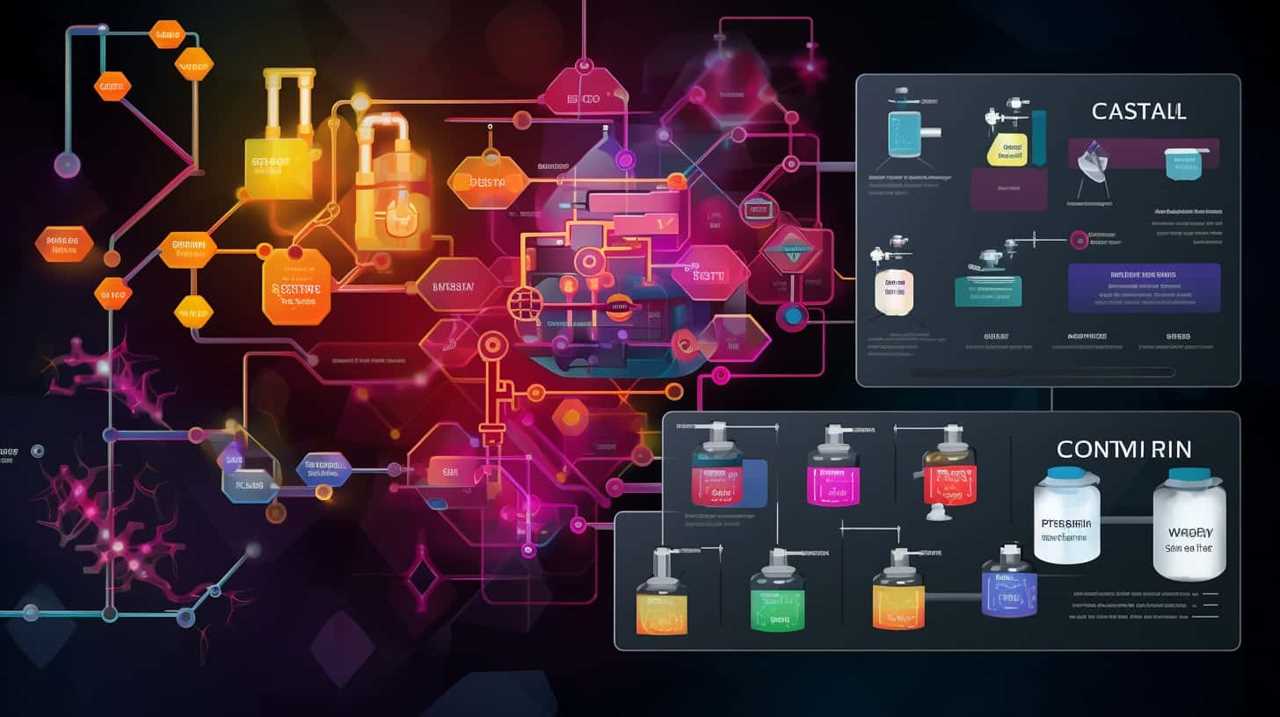The buzz about AI in manufacturing is everywhere, but did you know that only a small 10% of manufacturers have successfully implemented AI technologies? Dive into the world of AI in manufacturing to uncover the secrets and benefits that lie beyond the surface. Join the journey towards revolutionizing the industry with cutting-edge technology. Continue reading to discover why embracing AI is crucial for staying ahead in the competitive manufacturing landscape.
Overcoming the challenges of AI implementation is crucial for the industry’s growth. From data infrastructure and adoption awareness to system integration and workforce shortage, there are various hurdles to navigate.
Additionally, security and privacy concerns add another layer of complexity.
In this article, we’ll delve into the strategies and solutions to conquer these obstacles and unlock the full potential of AI in manufacturing.

Key Takeaways
- A robust data infrastructure is crucial for successful AI implementation in manufacturing.
- Raising awareness about the benefits and potential risks of AI adoption is essential.
- Integration challenges and system compatibility need to be addressed for successful AI implementation.
- The shortage of individuals with AI skills in manufacturing highlights the need for upskilling and attracting new talent.
Lack of Data Infrastructure
To address the lack of data infrastructure in our manufacturing processes, we must rely on the integration of AI technologies with existing systems.
Data availability and management are crucial aspects that need to be addressed in order to effectively implement AI in manufacturing. Without a robust data infrastructure, it becomes challenging to collect, store, and analyze the vast amount of data generated during the manufacturing process.
AI technologies, such as machine learning algorithms and predictive analytics, rely heavily on accurate and comprehensive data to make informed decisions and optimize production processes. Therefore, it’s essential to establish a data management system that ensures data is easily accessible, well-organized, and securely stored.
This will enable manufacturers to fully leverage the power of AI and unlock its potential to drive efficiency, improve quality, and enhance overall productivity in manufacturing operations.

Limited AI Adoption Awareness
Raising awareness about the limited adoption of AI in manufacturing is crucial. Despite the numerous benefits that AI implementation offers, such as increased efficiency, improved quality control, and cost savings, many manufacturers are still unaware of its potential. This lack of awareness poses a significant challenge to the widespread adoption of AI in the manufacturing sector.
By understanding the benefits that AI can bring to their operations, manufacturers can better appreciate the potential risks associated with not embracing this technology. These risks include falling behind competitors who’ve already implemented AI, missing out on opportunities for process optimization and productivity gains, and failing to meet the demands of an increasingly digital and automated industry.
Therefore, it’s imperative to raise awareness about AI adoption in manufacturing to ensure a more informed and competitive industry.
Integration With Existing Systems
As we delve into the challenges of implementing AI in manufacturing, it is crucial to address the integration of AI with existing systems. Integration challenges and system compatibility are major obstacles that need to be overcome for successful AI implementation. When integrating AI with existing systems, several issues arise, such as lack of standardization, data interoperability, and security concerns. To illustrate the complexity of this integration process, let’s consider the following table:

| Integration Challenges | System Compatibility |
|---|---|
| Lack of standardization | Incompatibility with legacy systems |
| Data interoperability | Limited API support |
| Security concerns | Vulnerability to cyber threats |
| Scalability issues | Constraints imposed by existing infrastructure |
| Resource allocation | Balancing AI capabilities with existing system capabilities |
These challenges highlight the importance of careful planning and collaboration between IT teams and AI experts. As we address these integration challenges, it becomes evident that a skilled workforce is necessary to navigate this complex landscape. Let’s now explore the subsequent section on the skilled workforce shortage.
Skilled Workforce Shortage
Addressing the integration challenges of AI with existing systems, we now turn our attention to the skilled workforce shortage in manufacturing.
As automation benefits become more apparent in manufacturing, there’s a growing need for a skilled workforce that can effectively operate and maintain AI-powered systems. However, the shortage of individuals with the necessary skills poses a significant challenge for the industry.
To address this issue, manufacturing companies are investing in training programs to upskill their existing workforce and attract new talent. These programs focus on providing employees with the knowledge and skills required to work with AI technologies, such as data analysis, machine learning, and programming.

Security and Privacy Concerns
To ensure the successful implementation of AI in manufacturing, we must prioritize the protection of security and privacy. The integration of AI technologies in manufacturing processes generates vast amounts of data, making data protection a critical concern. Safeguarding this data from unauthorized access and potential breaches is essential to maintain the integrity of operations and protect sensitive information. Additionally, regulatory compliance regarding data privacy and security must be adhered to, ensuring that companies meet legal requirements and avoid penalties. To address these challenges, organizations should implement robust security measures, such as encryption and access controls, to protect data throughout its lifecycle. Regular audits and assessments can help identify vulnerabilities and ensure regulatory compliance.
| Challenges | Solutions |
|---|---|
| Data protection | Implement encryption and access controls, regular audits and assessments |
| Regulatory compliance | Ensure adherence to legal requirements, avoid penalties |
Frequently Asked Questions
How Can Manufacturers Address the Lack of Data Infrastructure When Implementing AI Solutions?
To address the lack of data infrastructure in implementing AI solutions, we must focus on data collection techniques. Challenges in implementation can be overcome by developing robust data collection systems and investing in scalable data storage solutions.
What Steps Can Be Taken to Increase AI Adoption Awareness Within the Manufacturing Industry?
To increase AI adoption awareness in the manufacturing industry, we can collaborate with industry experts and organizations. By showcasing the benefits and success stories, we can inspire others to embrace AI technologies and drive innovation.
How Can Manufacturers Ensure Seamless Integration of AI Systems With Their Existing Infrastructure?
To ensure seamless integration of AI systems with existing infrastructure, we must focus on ensuring compatibility and optimizing our infrastructure. This involves conducting thorough compatibility assessments, optimizing data storage and processing capabilities, and implementing scalable solutions.

What Strategies Can Be Implemented to Overcome the Shortage of Skilled Workforce in AI Implementation in Manufacturing?
To address the skill shortage in AI implementation, we can implement strategies such as upskilling our workforce. This will enable us to overcome the challenges and ensure a seamless integration of AI systems in manufacturing.
What Measures Can Manufacturers Take to Address Security and Privacy Concerns While Implementing AI Technologies?
To address security and privacy concerns while implementing AI technologies, manufacturers can prioritize data security by implementing robust encryption protocols and access controls. Additionally, they can establish clear AI ethics guidelines to ensure responsible and ethical use of AI systems.
Conclusion
In the ever-evolving landscape of manufacturing, overcoming the challenges of implementing AI requires a focused and determined approach.
Just as a well-oiled machine relies on various components working in harmony, so too must data infrastructure, adoption awareness, system integration, workforce skills, and security concerns align seamlessly.

By addressing these challenges head-on, manufacturers can unlock the true potential of AI, harnessing its power to revolutionize their operations and drive future success.









